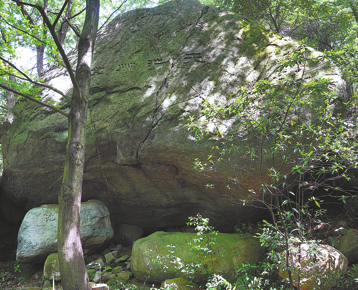

Beyond the misty peaks and lush valleys that define its picturesque landscape, Lushan Mountain in Jiangxi province offers a rich, tangible tapestry of history woven from ancient temples, villas, and inscriptions left by scholars and monks.
Along the mountain's Ninety-Nine Bends Ancient Path are more than 20 stone inscriptions from different dynasties scattered across the rocks and cliff faces — the oldest dating back over 1,000 years.
The route spans a total of 8 kilometers, with a width of 1.5 to 2 meters. Its roadbed is made of stone steps, featuring steep slopes and multiple hazardous sections, along with three stone bridges.
Southern Song Dynasty (1127-1279) scholar Zhou Bida (1126-1204) wrote a travel note regarding Lushan Mountain, saying that the path was a vital mountain-climbing route at the time, with scattered pavilions for rest along the way.
"It's the longest-standing ancient climbing route on the mountain, but it is no longer the main hiking trail. … It's essential to research the value of these cliff inscriptions and promote the road's stories," says He Wei, a veteran expert on Lushan Mountain's culture and history, while introducing details of the carvings.
Immersed in the mountain's picturesque scenery of jagged peaks and gurgling springs, numerous poets, scholars and government officials have left such inscriptions on its cliffs over centuries.
"They are more than just an integral part of the mountain's cultural relics; they stand as precious, vivid historical records that bear witness to its rich cultural legacy," He says.
During the ongoing fourth national cultural relic survey, a major task for Lushan city is to document such ancient inscriptions on the mountain.
Gathering their data is challenging, as many are distributed across a vast mountainous area, making them difficult to access.
Cultural heritage worker Zeng Liangliang and his colleagues make thorough preparations before venturing out, wearing mountaineering clothes and carrying enough water and food. It is common for them to push through thorns and climb dangerous rocks, resulting in scratches and cuts on their hands and feet.
"We usually set off into the mountains around 7 am, and end the day's survey with the beautiful sunset. We take photos, clean the area around the immovable cultural relics, and collect various data," Zeng says.